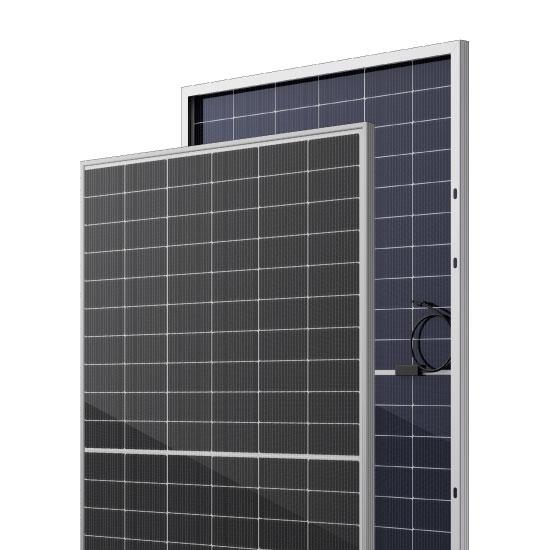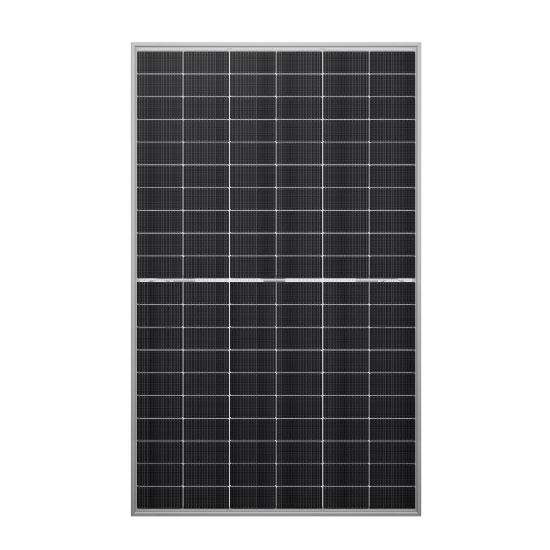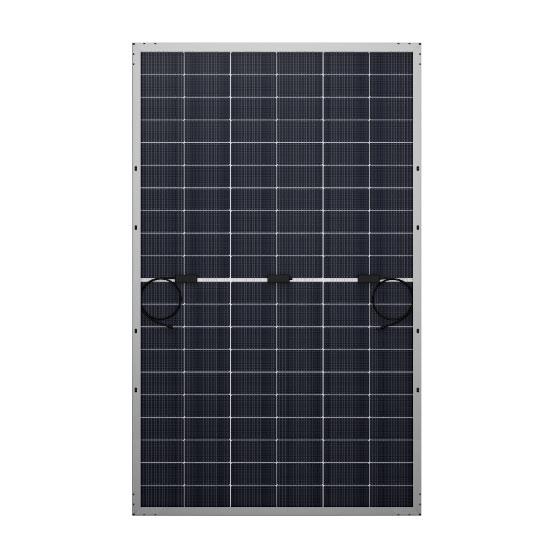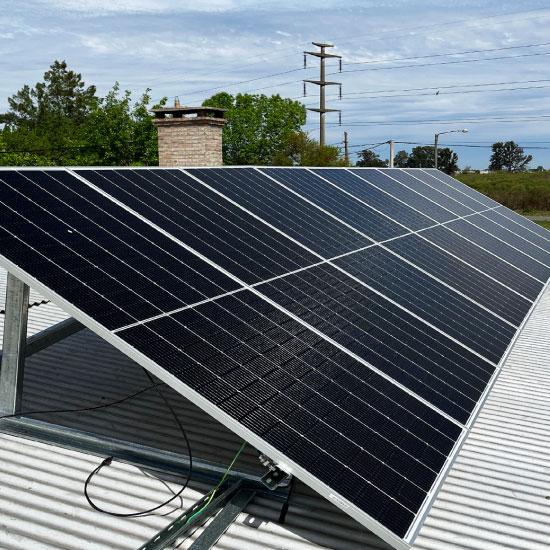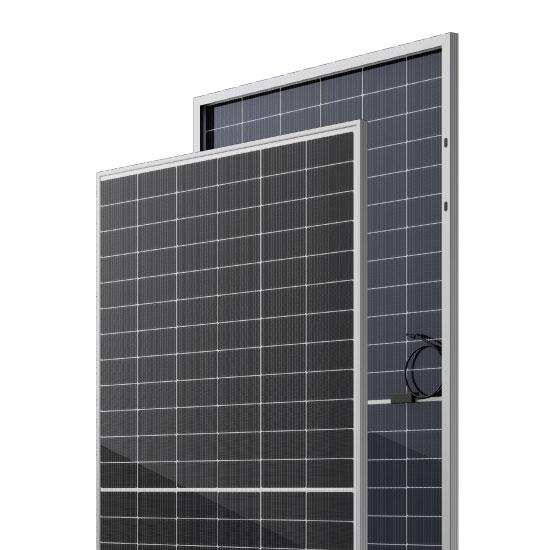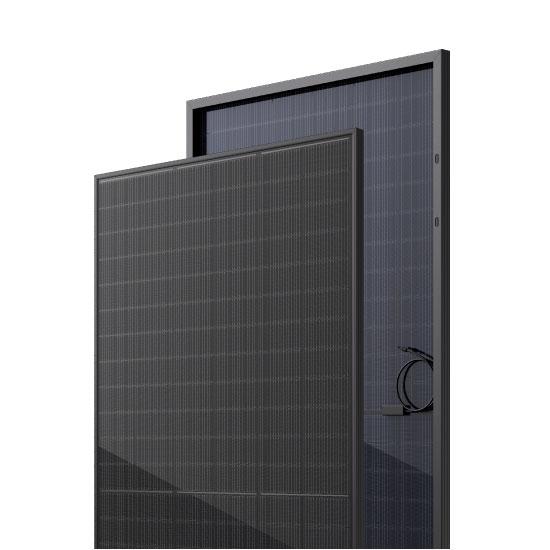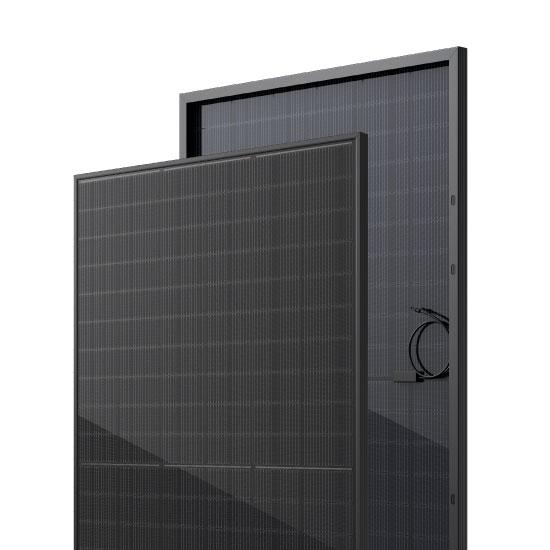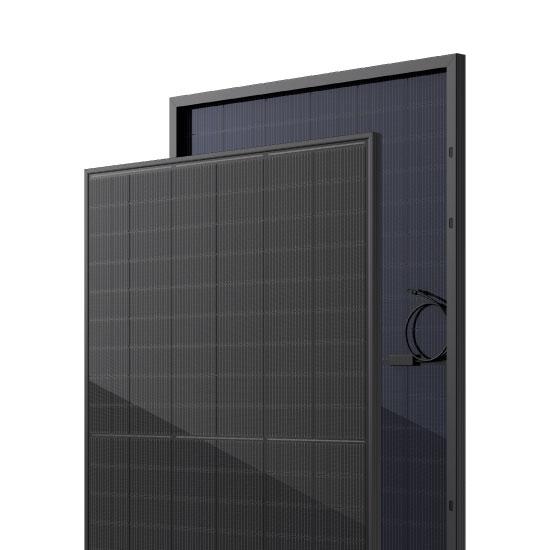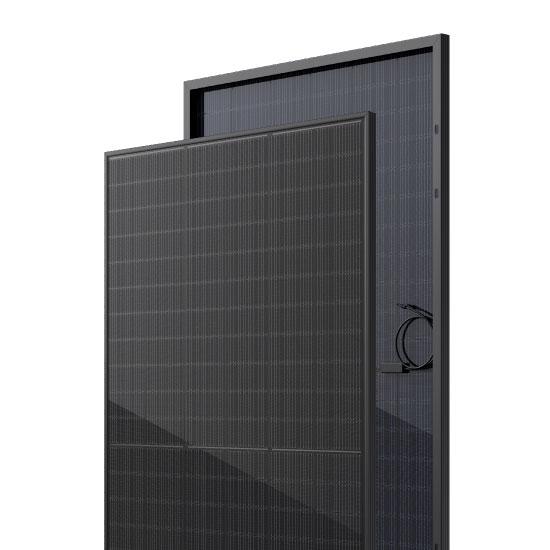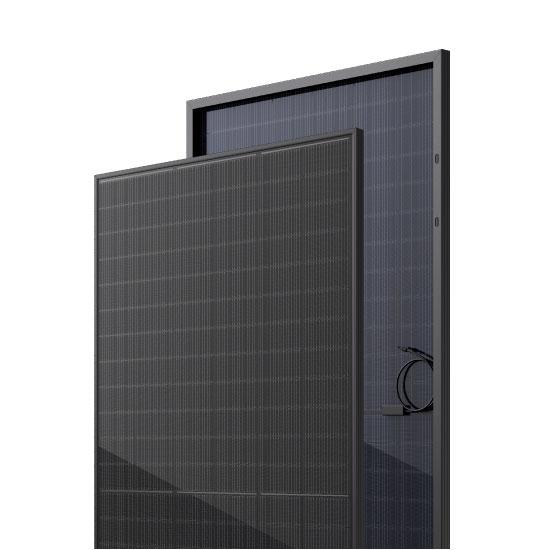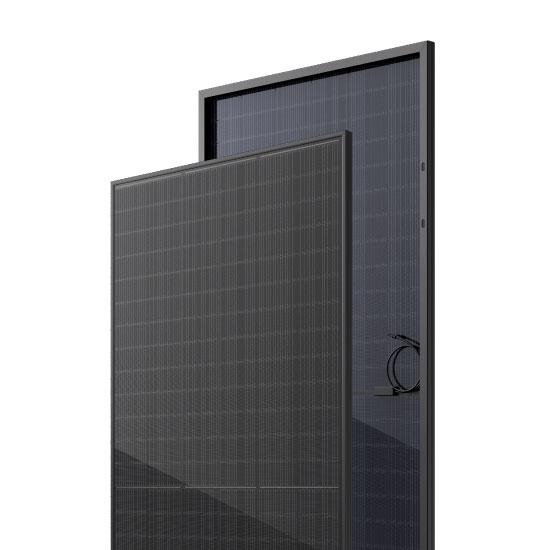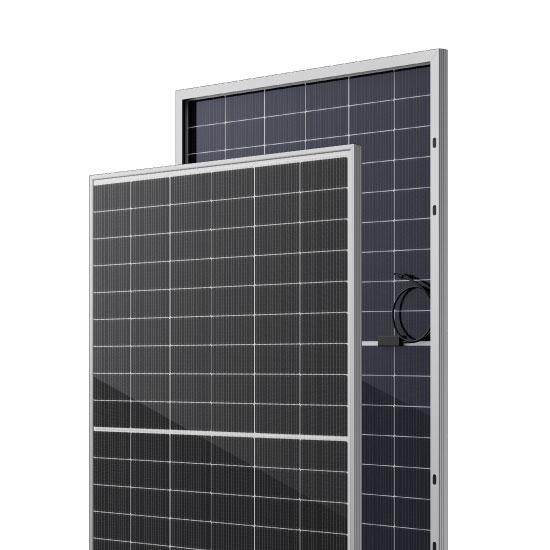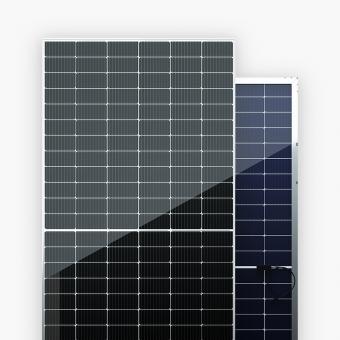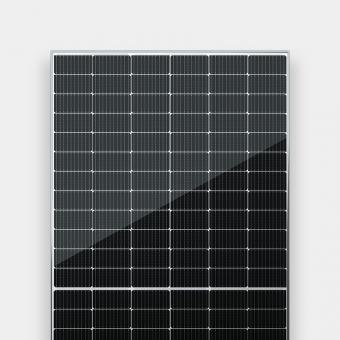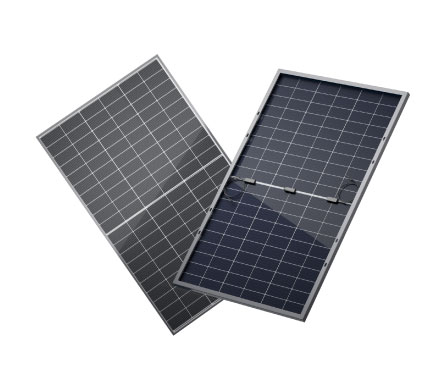
MBB BiMAX5N 120 Half Cell Bifacial Solar Panel
Experience next-level solar energy with the N-Type TOPCon Mono Bifacial Solar Panel. This innovative product resounds efficiency and longevity, thanks to advanced features:
Performance:
Its N-Type TOPCon Cell Tech and MBB tech significantly enhance output by facilitating smooth energy conversion, reduced resistance, and dual-sided sunlight absorption.
Durability:
Resistance to harsh weather conditions and minimized power degradation assure consistent performance over time, backed by a 25-Year Material Warranty and 30-Year Power Warranty for peace of mind.
Profitability:
The bifacial design ensures operational efficiency reducing energy costs, even in hotter climates, promising an excellent return on investment.
Versatility:
Their adaptability in diverse settings, from residences to businesses or specialized applications, coupled with their modern aesthetic appeal, makes these panels a top solar solution.
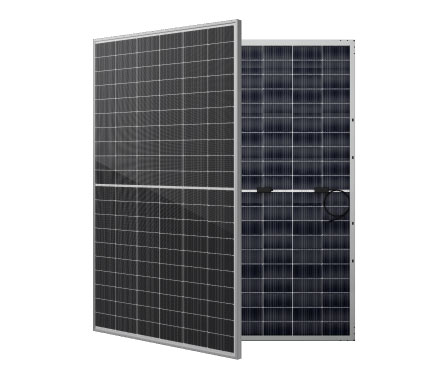 Large Solar Panel Advantages
Large Solar Panel Advantages
Lower Electricity Bills:
Switching to solar photovoltaics notably drops, or even eliminates, reliance on the electrical grid. Should there be a surplus, many locations even allow energy resale back to the grid for additional savings.
Upgraded Home Value:
Homes equipped with solar systems usually fetch a higher market price, positioning solar energy as a valid investment for property owners.
Minimal Upkeep:
Solar panels offer longevity and require minimal maintenance, marking them as sound inputs in long-term energy conservation strategies.
Energy Autonomy:
Adopting solar power aids in achieving energy self-sufficiency, decreasing dependence on imported fuels, and protecting against fluctuating fuel costs.
Broad-spectrum Application:
The flexibility of solar energy allows its use across varied sectors, from residential and small-scale business use to powering large utility plants and spacecraft.
Technological Progress:
Continual advancements in solar energy technologies, including panels and batteries, make this eco-conscious energy option increasingly efficient and affordable.
Aid in Access:
Installation subsidies, tax credits, and other incentives in many regions alleviate the initial investment, expanding access to potential solar consumers.
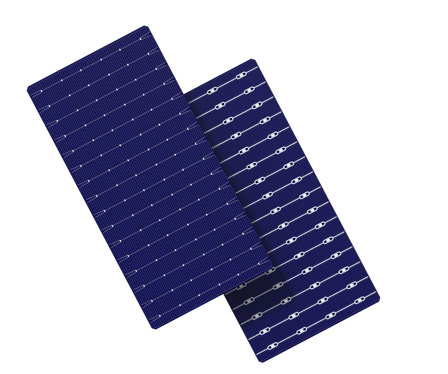
Half-Cut Technology Advantages
Embrace tomorrow's solar technology and consider half-cut solar tech for these compelling reasons:
Better Efficiency and Less Power Loss: By using smaller cells, the electrical current in each cell is reduced—resulting in superior energy conversion while minimizing losses. This technology also offers more power-per-unit area versus conventional panels.
Increased Yield in Shaded Areas: With half-cut tech, each panel works in two parts, allowing one half to work unabatedly if the other is shaded. This design improves output in partly shaded conditions and reduces high-temperature effects.
Improved Durability: Small cells are less susceptible to micro-cracks, bolstering their resistance and lifespan.
Combines with Latest Solar Techniques: Half-cut cell tech can seamlessly amalgamate with PERC and bifacial technologies for optimal power production and reduced losses.
Cost Efficiency: Despite a higher production cost, greater efficiency and power output lead to lesser cost per watt and quicker ROI.
Challenges: While the manufacture of half-cut cells can pose challenges and potential defects, effective quality control ensures the advantages significantly overcome potential drawbacks.

BiMAX5N TOPCon Certifications:
IEC 61215, IEC 61730, UL 61730
ISO 9001:2008: ISO Quality Management System
ISO 14001: 2004: ISO Environment Management System
OHSAS 18001: 2007 Occupational Health and Safety
BiMAX5N Solar Panel Features:
- Bifacial technology enables additional energy harvesting from rear side (up to 25%)
- Glass/glass lamination ensures 30 year product lifetime, with annual power degradation < 0.45%,
- 1500V compatible to reduce BOS cost
- Solid PID resistance ensured by solar cell process optimization and careful module BOM selection Reduced resistive loss with lower operating current
- Higher energy yield with lower operating temperature
- Reduced hot spot risk with optimized electrical design and lower operating current













